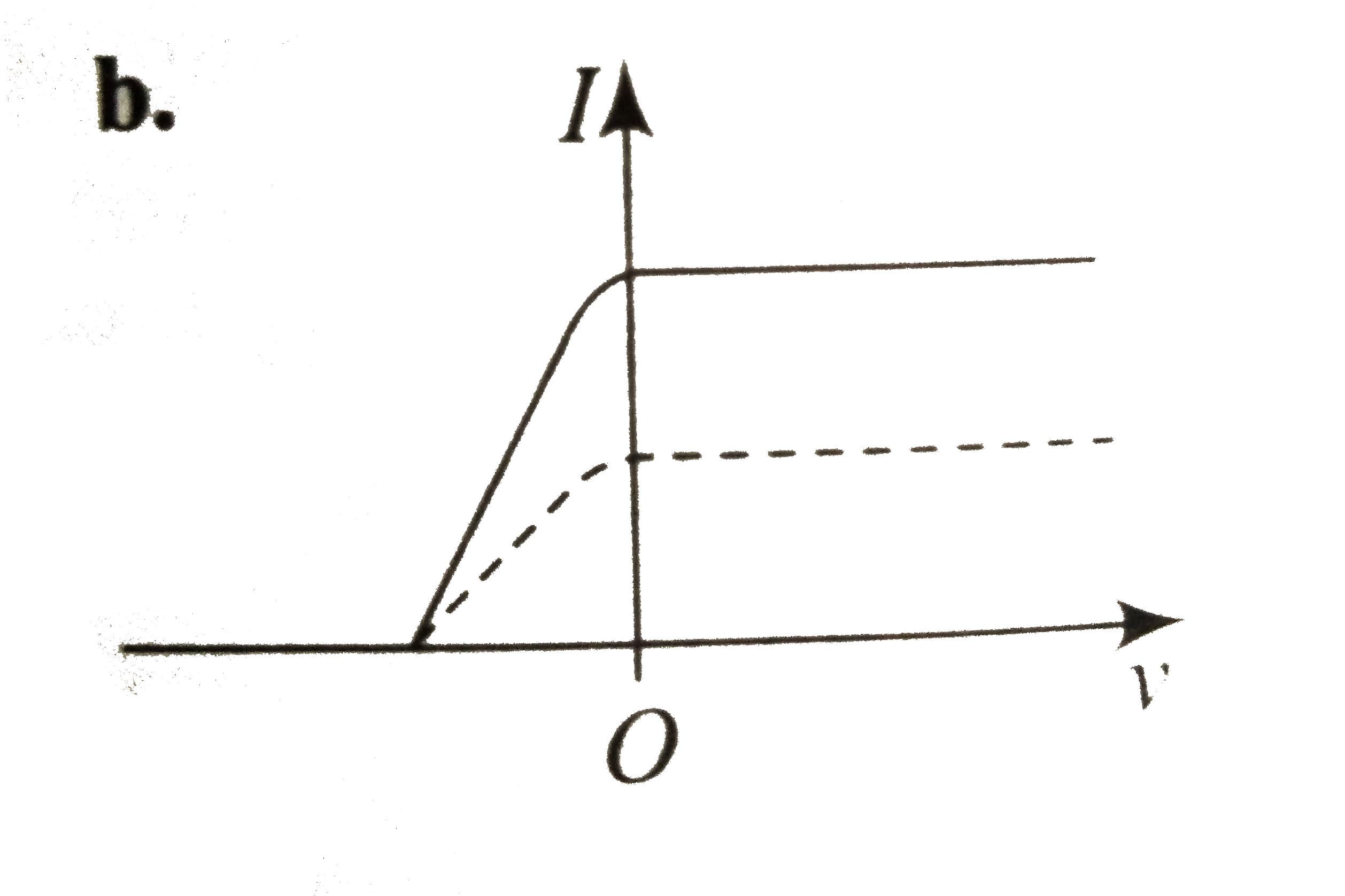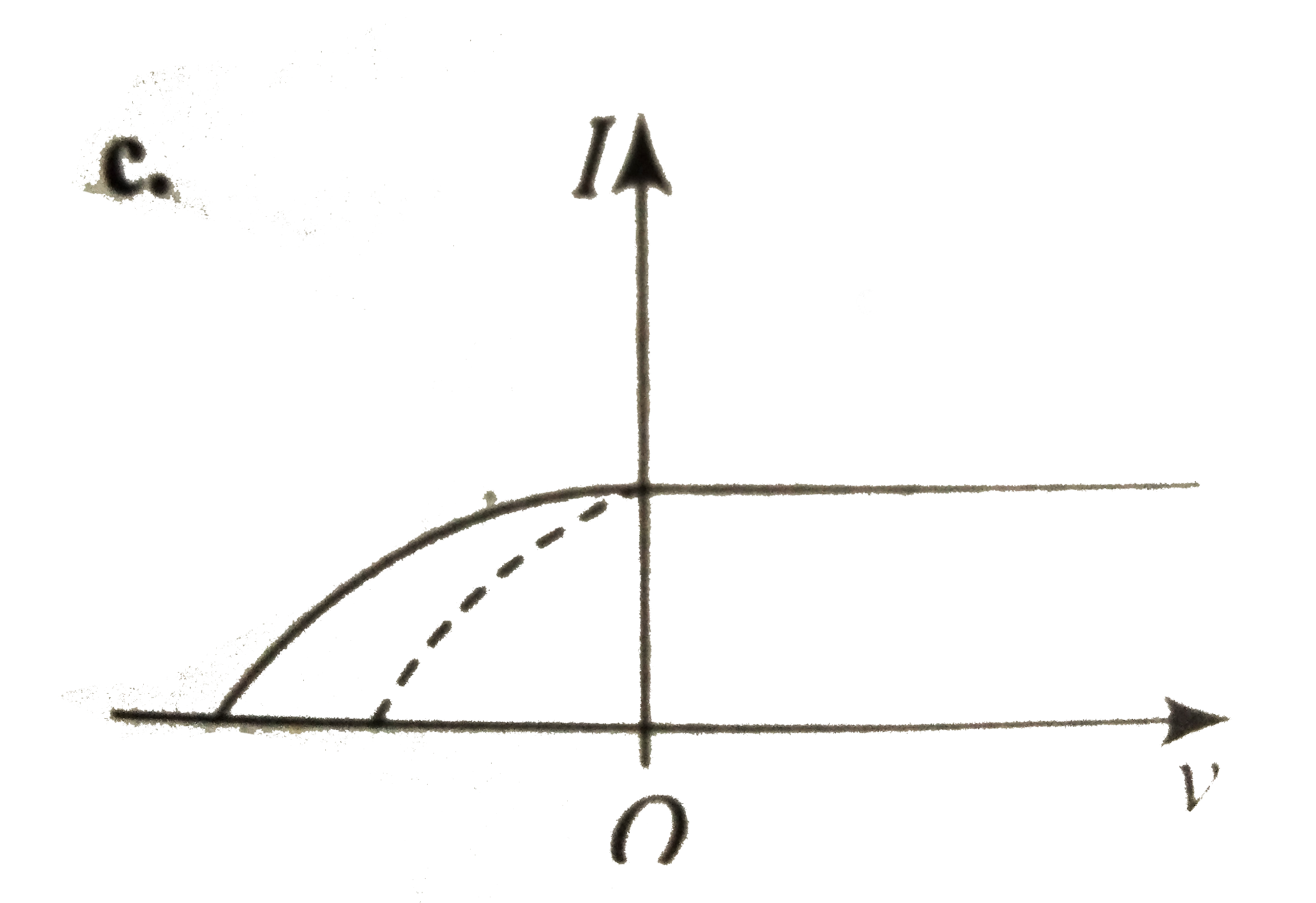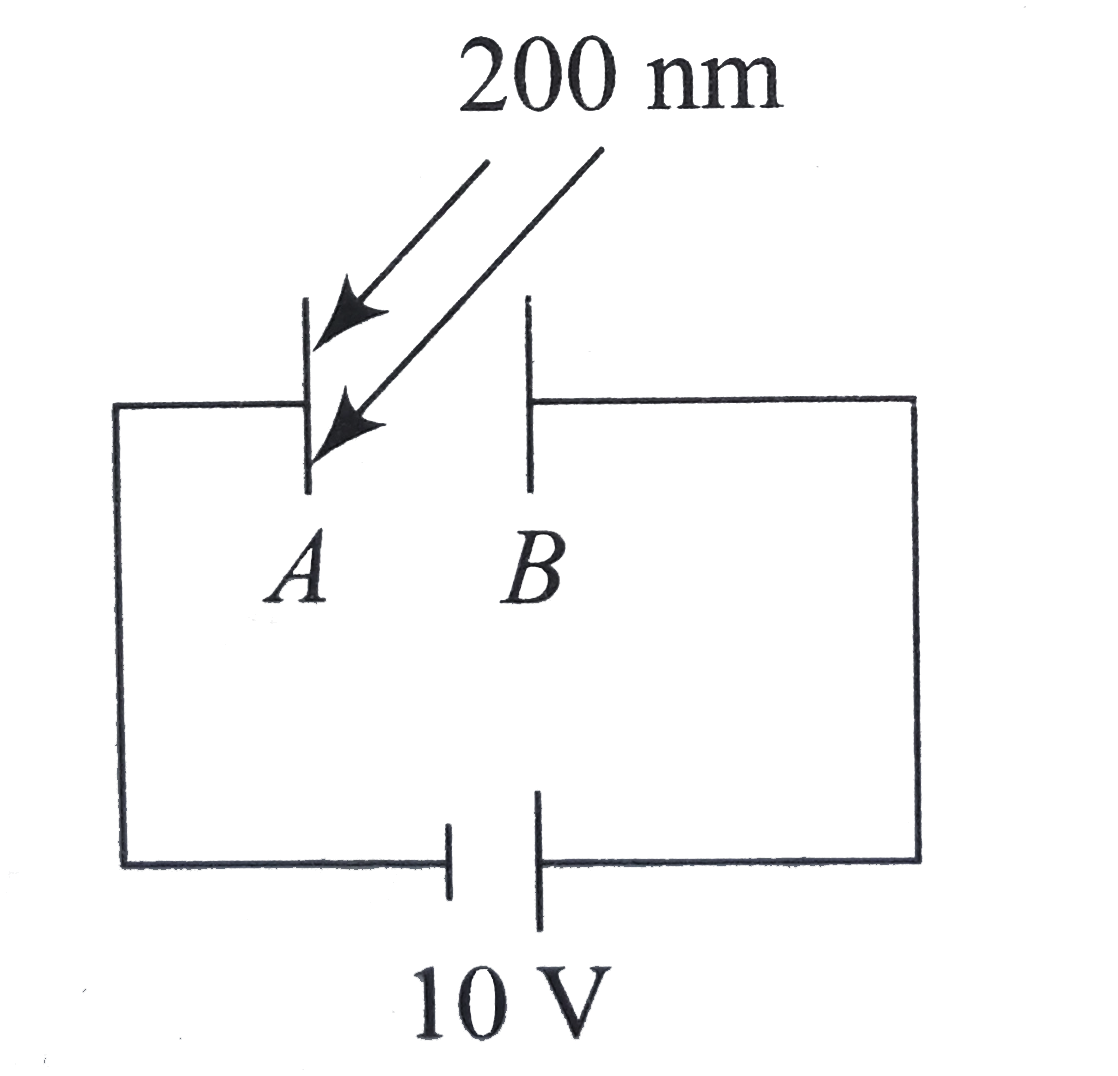
A metal surface in an evacuated tube is illuminated with monochromatic light causing the emission of photoelectrons. For a given intensity of light, a graph between saturation current and potential of the electrode is given in Fig. If the experiment were repeated with light of twice the intensity but the same wavelength, which of the graphs below would best represent the new relation between I and V?(Dotted represents initial condition)




The correct Answer is:B
On increaseng intensity, only saturation current increases, whereas retarding potential remains the same because wavelength of lighti s unchanged.
Topper's Solved these Questions
- PHOTOELECTRIC EFFECTBOOK - CENGAGE PHYSICSCHAPTER - PHOTOELECTRIC EFFECTEXERCISE - Multiple Correct
10 Videos
- PHOTOELECTRIC EFFECTBOOK - CENGAGE PHYSICSCHAPTER - PHOTOELECTRIC EFFECTEXERCISE - Linked Comprehension
44 Videos
- PHOTOELECTRIC EFFECTBOOK - CENGAGE PHYSICSCHAPTER - PHOTOELECTRIC EFFECTEXERCISE - Subjective
16 Videos
- NUCLEIBOOK - CENGAGE PHYSICSCHAPTER - NUCLEIEXERCISE - QUESTION BANK
59 Videos
- RAY OPTICSBOOK - CENGAGE PHYSICSCHAPTER - RAY OPTICSEXERCISE - DPP 1.6
12 Videos
Similar Questions
When barium is irradiated by a light of λ=4000A all the photoelectrons emitted are bent in a circle of radius 50 cm by a magnetic field of flux density 5.26×10−6 T acting perpendicular to plane of emission of photoelectron. Then,
View SolutionA 100 W point source emits monochromatic light of wavelength 6000A
Q. Calculate the photon flux (in SI unit) at a distance of 5m from the source. Given h=6.6×1034J s and c=3×108ms−1
View Solution
In Fig. electromagnetic radiations of wavelength 200nm are incident on a metallic plate A. the photoelectrons are accelerated by a potential difference of 10 V. These electrons strike another metal plate B from which electromagnetic radiations are emitted. The minimum wavelength of emitted photons is 100nm. If the work function of metal A is found to be (x×10−1)ev, then find the value of x. (Given hc=1240eV nm)
View SolutionThe half lives of radioactive elements X and Y are 3 minute and 27 minute respectively. If the activities of both are same, then calculate the ratio of number of atoms of X and Y.
View SolutionA simple telescope, consisting of an objective of focal length 60 cm and a single eye lens of focal length 5 cm is focussed on a distant object in such a way that parallel rays comes out from the eye lens. If the object subtends an angle 2∘ at the objective, the angular width of the image
View SolutionFor intensity I of a light of wavelength 5000 Å the photoelectron saturation current is 0.40 mu A and stopping potential is 1.36 V , the work function of metal is
View SolutionThe graph between intensity of light falling on a metallic plate (I) with the current (i) generated is
View Solutionएक धत्विक प्लेट पर आपतित प्रकाश की तीव्रता (Iu) और धरा (I) के मध्य ग्राफ है -
View SolutionThe graph between stopping potential and intensity of light in photoelectric effect is
View Solutionविभिन्न तीव्रता तथा समान तरंगदैर्ध्य के दो प्रकाश पुंजों के लिए प्रकाश-वैद्युत धारा तथा एनोड विभव के बीच ग्राफ खींचिये।
View SolutionWhen a metallic surface of threshold wavelength 4λ is illuminated with light of wavelength λ the stopping potential is V. When the same surface is illuminated by the light of wavelength 2λ Stopping potential is V3 Threshold wavelength for the metallic surface is
View SolutionWhen a piece of metal is illuminated by a monochromatic light of wavelength lambda , then stopping potential is 3V_s . When the same surface is illuminated by the light of wavelength 2 lambda , then stopping potential becomes V_s . The value of threshold wavelength for photoelectric emission will be
View SolutionDraw a graph between intensity of light and photoelectric current for a given frequency .
View Solutionनीचे प्रदर्शित ग्राफ में से कौन-सा आपतित प्रकाश तथा धातु पृष्ठ से निष्कासित इलेक्ट्रॉन के बीच का सम्बन्ध सही ढंग से नहीं अभिव्यक्त करता है?
View SolutionThe graph between stopping potential and intensity of light in photoelectric effect is
View Solution
